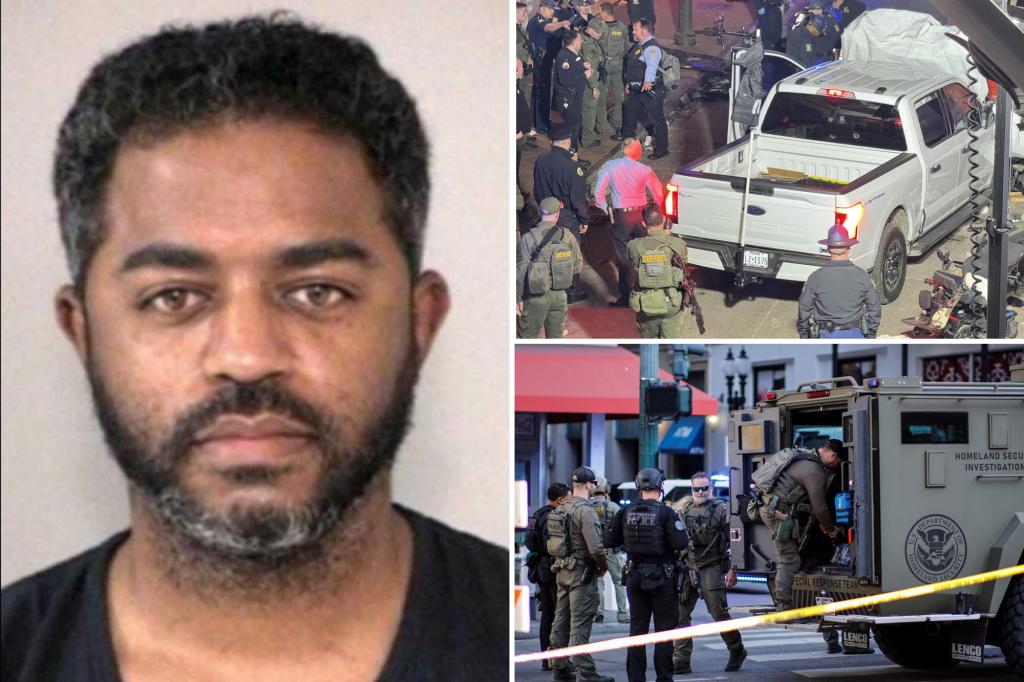Shamsud-Din Jabbar, a man who plowed his F150 truck into a crowded New Orleans street on New Year’s Eve, killing 14 people, had planned to detonate two bombs nearby simultaneously, taking advantage of the city’s lack of security measures compared to previous years. These devices were never activated for unknown reasons. Additionally, bomb-making materials were found inside Jabbar’s rental home, where he attempted to set a fire to hide his plans. Federal authorities also found bomb-making materials in his Houston home, suggesting a long-term plan for the attack.
Investigators discovered that Jabbar had set a small fire in his rental home with the intent to destroy evidence of his plans. The fire extinguished itself before spreading further, allowing for the recovery of evidence related to bomb-making materials from the scene. Authorities also found bomb-making materials at his Houston home, along with a Quran open to a page about “slaying” in the name of Allah. Jabbar purchased a cooler to store the bombs, suggesting that he had been planning the attack for at least six weeks prior.
The attack occurred in New Orleans during New Year’s Eve celebrations, as the city had fewer security measures in place in the French Quarter than in previous years. Steel columns known as bollards, meant to prevent vehicle access to Bourbon Street, had been removed for maintenance, making it easier for the attacker to carry out his plans. The attacker drove a Ford pick-up into the crowd, killing 14 people and injuring about 30 others. The motives for the attack are still unclear, as Jabbar was killed in a shootout with police following the incident.
Jabbar had posted chilling videos on Facebook proclaiming his support for ISIS and his intentions to harm others. He mentioned his isolation and extremist views in some videos, hinting at his radicalization leading up to the attack. Jabbar’s personal life was marked by three divorces, with his ex-wives citing threatening behavior and instability. His family noted that he had begun to unravel in the past year, posting extremist religious views online and associating unrelated events with violence.
The attack is considered the deadliest ISIS-inspired assault on U.S. soil in years, highlighting the threat of international terrorism. Jabbar’s attack and subsequent death in a police shootout have raised concerns about radicalization and the potential for future attacks. The city of New Orleans is still recovering from the tragedy, with many injured individuals remaining hospitalized. The identity of the victims has been released, shedding light on the lives lost in the attack.
In conclusion, the New Orleans attack orchestrated by Shamsud-Din Jabbar on New Year’s Eve was a tragic event resulting in 14 deaths and multiple injuries. Jabbar’s detailed planning, bomb-making materials, and extremist ideology highlighted the threat of international terrorism on U.S. soil. The attack laid bare the potential dangers of radicalization and the need for increased security measures to prevent similar incidents in the future. The motivations behind the attack are still unclear, with Jabbar’s personal struggles and radical beliefs likely playing a role. The aftermath of the attack has left the city in mourning, with authorities working to understand the full extent of the tragedy and prevent future occurrences.













